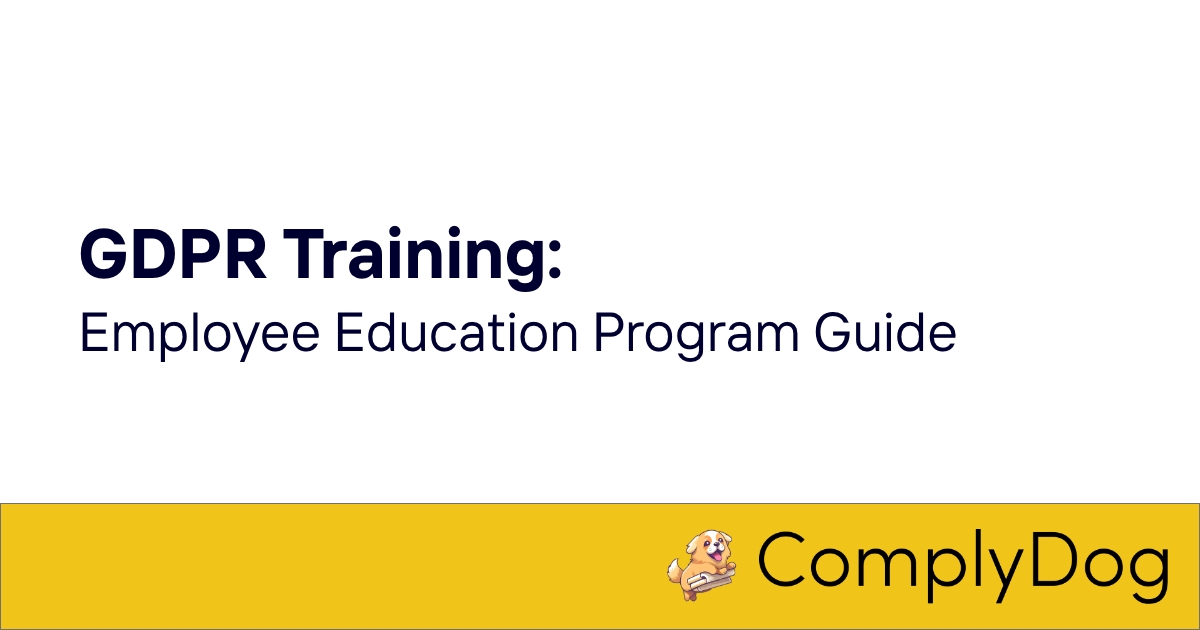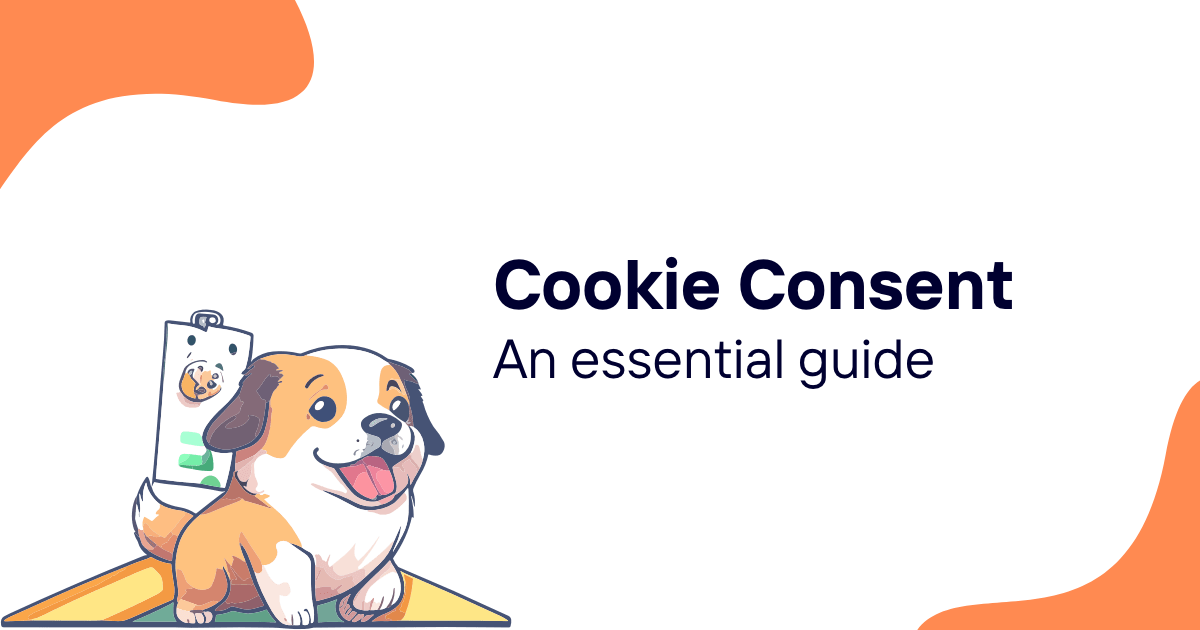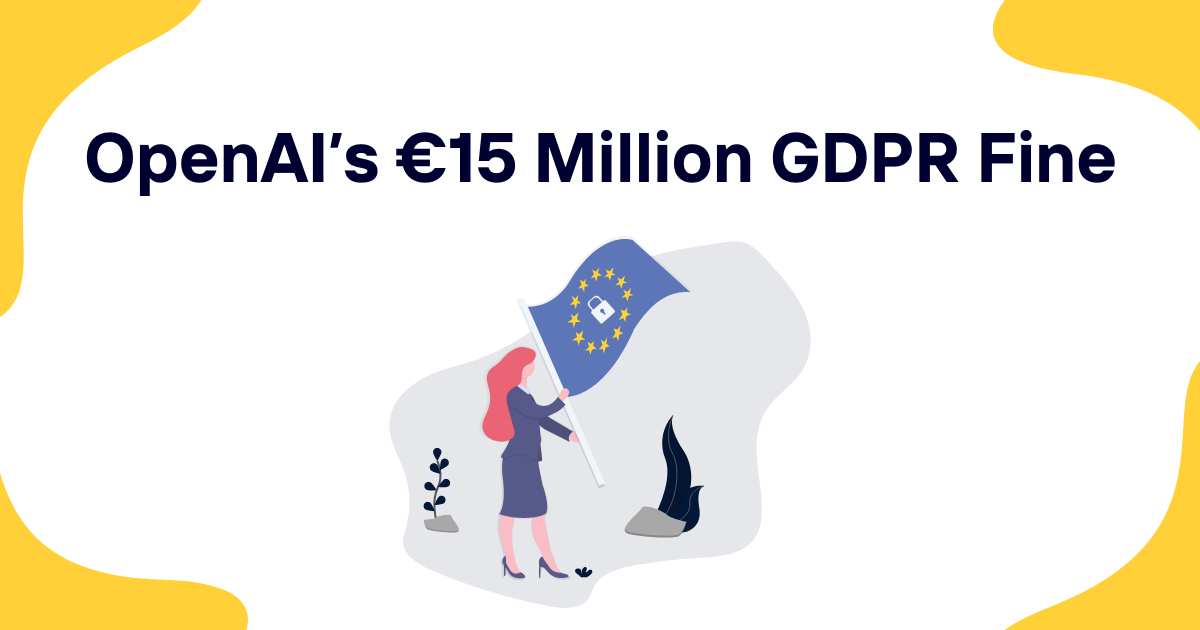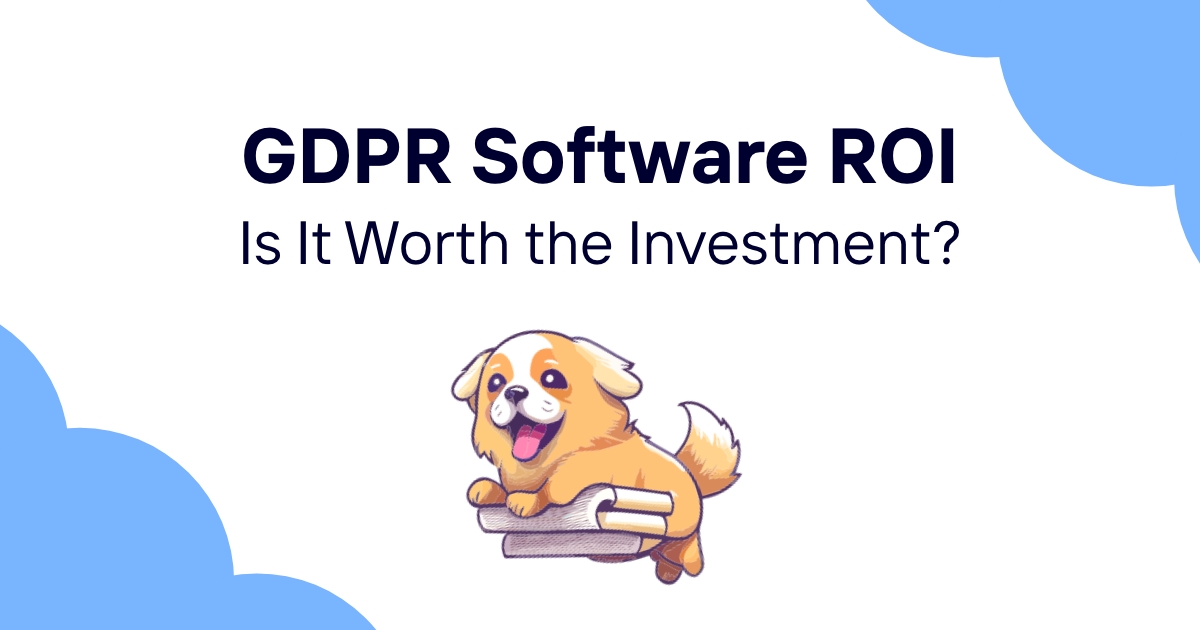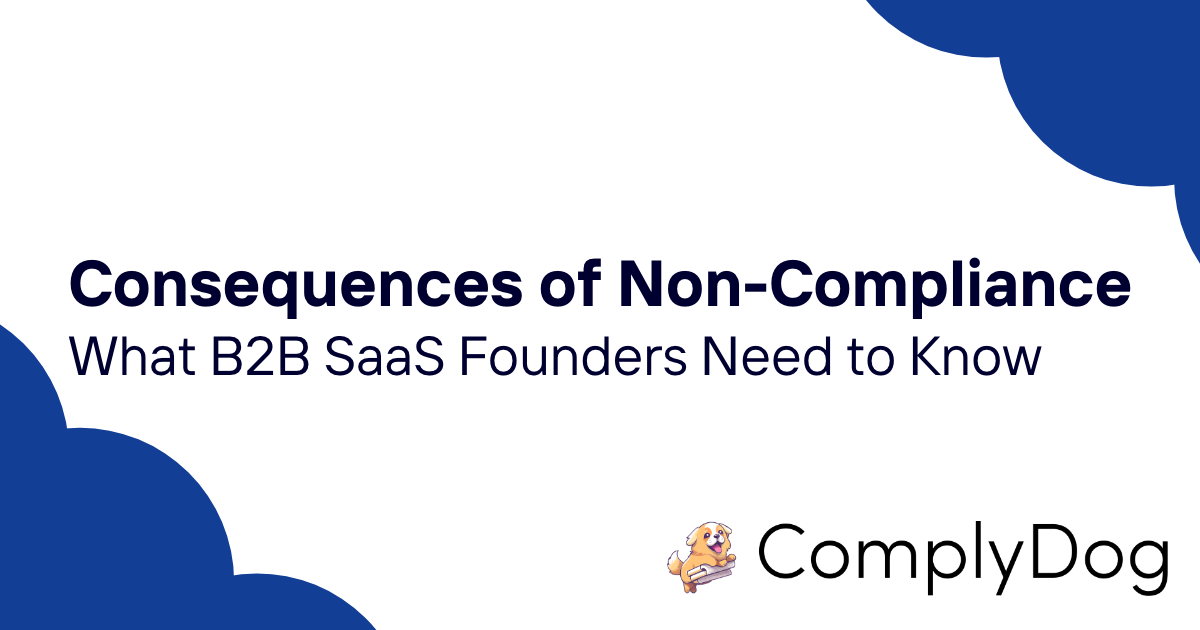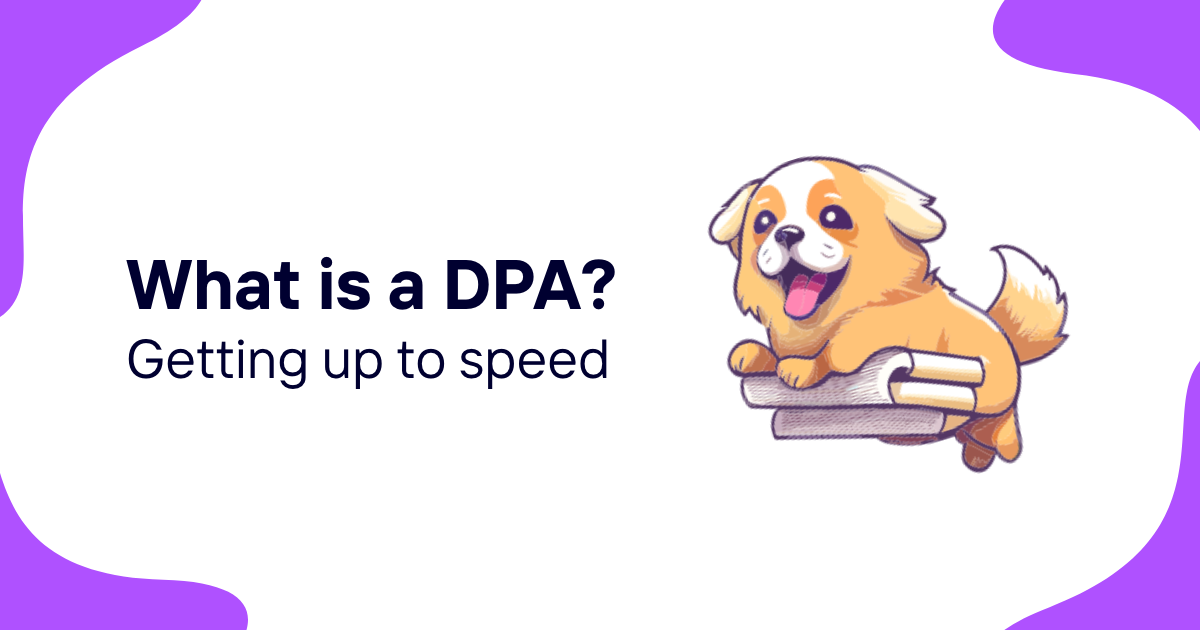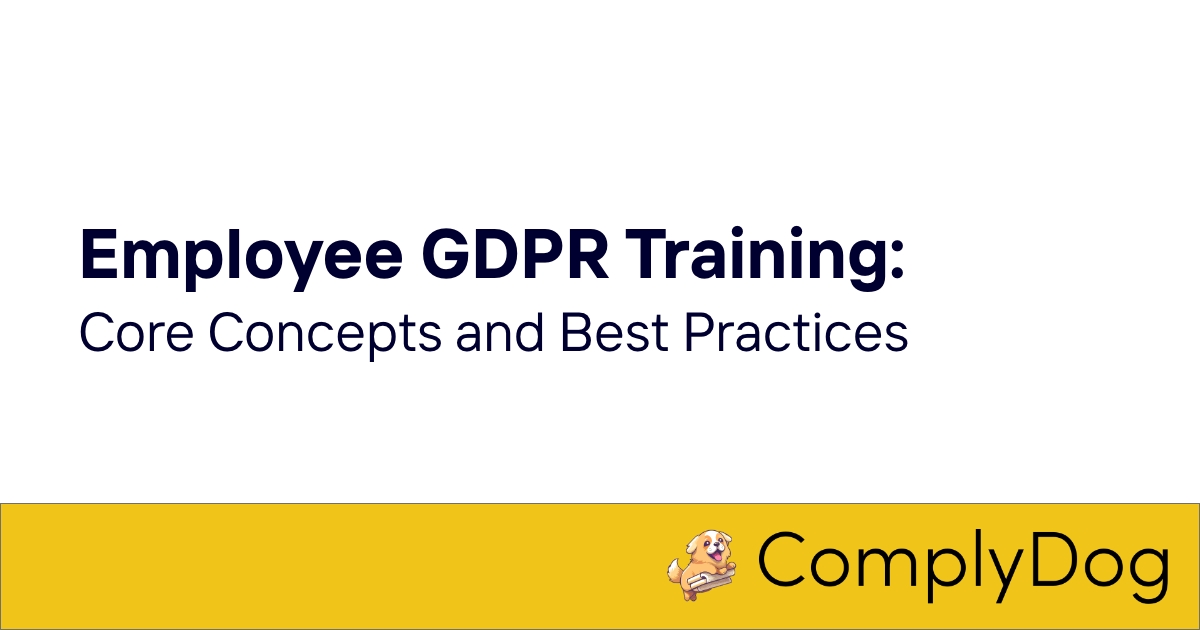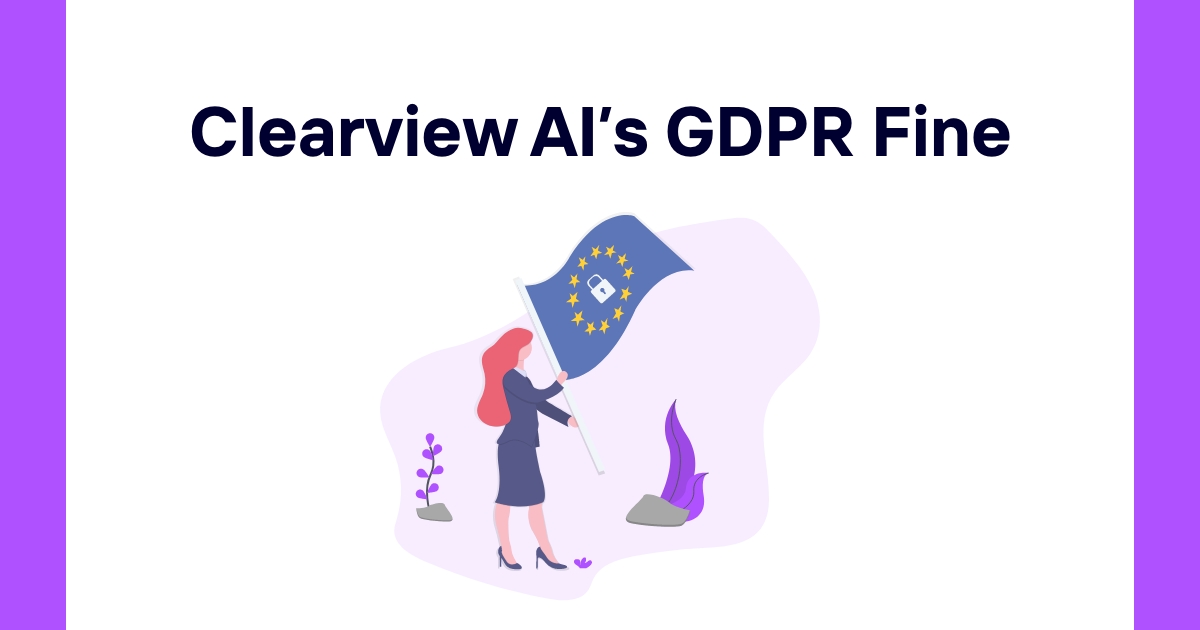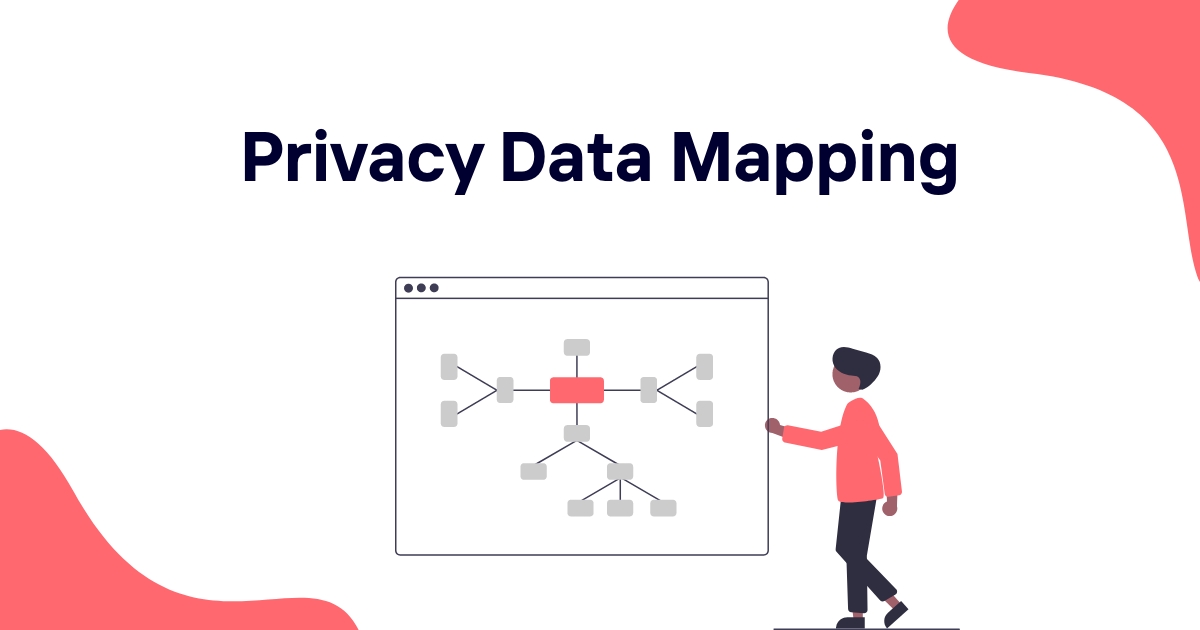Your employees handle personal data every day, but do they understand their GDPR responsibilities? A single employee mistake can trigger investigations, fines, and reputation damage that takes years to recover from.
Most organizations provide basic privacy training once during onboarding, then wonder why data breaches keep happening. Generic training programs fail because they don't address real workplace scenarios or create lasting behavioral change.
This guide shows you how to build comprehensive GDPR training programs that actually protect your organization while empowering employees to handle data confidently and correctly.
Importance of GDPR Employee Training
Legal and Regulatory Requirements
GDPR Article 39 requires organizations to ensure staff involved in processing receive appropriate training on data protection obligations. This isn't optional guidance - it's a legal requirement that regulators actively check during audits.
Training requirements extend beyond just technical teams to include anyone who handles personal data, from HR and sales to customer service and marketing. Most employees interact with personal data more than they realize.
Inadequate training becomes evidence of organizational negligence during regulatory investigations. Well-documented training programs demonstrate your commitment to compliance and can reduce penalty severity.
Risk Mitigation Benefits
Human error causes 95% of data breaches according to cybersecurity research. Training programs directly address this primary source of privacy incidents by improving employee decision-making.
Employees who understand privacy principles make better choices about data collection, sharing, and retention. This reduces both intentional violations and accidental mistakes that create compliance problems.
Proactive training prevents expensive problems rather than reacting to incidents after they occur. The cost of comprehensive training programs is typically far less than a single significant data breach.
Business Value Creation
Well-trained employees become privacy champions who identify improvement opportunities and help build customer trust. Privacy-aware staff often discover process efficiencies while reducing compliance risks.
Training programs demonstrate privacy commitment to customers and business partners. Organizations with visible privacy education often win contracts where competitors without training programs lose opportunities.
Employee confidence in handling privacy matters improves job satisfaction and reduces stress. Clear guidance helps staff feel empowered rather than worried about making mistakes.
Training Program Design and Structure
Needs Assessment Process
Start by mapping all roles that interact with personal data to understand specific training requirements. Different positions need different levels of detail and focus areas.
Survey employees about current privacy knowledge and confidence levels. This baseline assessment helps identify knowledge gaps and design targeted training content.
Analyze past privacy incidents to identify common failure patterns. Training programs should specifically address the types of mistakes your organization has experienced.
Learning Objectives Framework
Define specific, measurable learning outcomes for each training module. Vague objectives like "understand GDPR" don't provide clear success criteria or actionable guidance.
Focus on behavioral changes rather than just knowledge transfer. Employees need to know what to do differently, not just understand theoretical concepts.
Align training objectives with business processes and real workplace scenarios. Abstract privacy principles become meaningful when connected to daily work activities.
Modular Training Structure
Design training in short, focused modules rather than lengthy comprehensive sessions. Most adults learn better through bite-sized content they can complete during busy work schedules.
Create core modules covering fundamental concepts that all employees need, plus specialized modules for specific roles or high-risk activities.
Plan progressive training that builds complexity over time. Start with basic concepts before advancing to nuanced decision-making scenarios.
Assessment and Certification
Include knowledge checks throughout training modules to reinforce learning and identify areas where employees need additional support.
Design practical assessments that test decision-making abilities rather than just memorization. Scenario-based questions better predict real-world performance.
Provide certificates or completion records that employees can reference and managers can track. Documentation proves training completion during compliance audits.
Role-Specific Training Requirements
General Staff Training
All employees need basic privacy awareness covering data types, handling requirements, and incident reporting procedures. This foundation prevents most common privacy mistakes.
Cover email security, password management, and social engineering awareness since these affect all staff regardless of their primary responsibilities.
Explain how privacy protection benefits the organization and customers. Employees who understand the "why" behind rules are more likely to follow them consistently.
Management and Supervisory Training
Managers need deeper understanding of privacy principles to make informed decisions about data processing activities and staff oversight.
Supervisory training should cover how to identify privacy risks in team activities and when to escalate concerns to privacy specialists.
Management training must address their responsibility for ensuring team compliance and creating supportive environments for privacy-conscious behavior.
IT and Technical Staff Training
Technical teams need detailed training on privacy by design, data security measures, and technical safeguards implementation.
Cover system configuration, access controls, and data lifecycle management since technical decisions directly impact privacy protection effectiveness.
Include vendor management and third-party integration guidance since technical staff often implement systems that process personal data.
HR and People Operations
HR staff handle sensitive employee data requiring special protection under employment law and GDPR provisions for employee data.
Training should cover recruitment data handling, employee monitoring limitations, and data retention requirements for personnel records.
Include guidance on handling employee privacy requests and managing workforce privacy incidents.
Sales and Marketing Teams
Sales and marketing staff often collect and use personal data for customer outreach, requiring training on consent management and communication preferences.
Cover lead generation practices, contact database management, and appropriate use of customer information for business development.
Include training on privacy-compliant marketing technologies and customer communication preferences management.
Training Content and Materials
Core Privacy Concepts
Explain what constitutes personal data using real examples from your industry and organization. Generic definitions often miss industry-specific data types that create compliance risks.
Cover legal bases for processing and help employees understand when different legal grounds apply to their work activities.
Explain data subject rights in practical terms with examples of how to handle requests appropriately and when to involve privacy specialists.
Practical Scenario Training
Develop case studies based on actual workplace situations employees encounter. Real scenarios are more engaging and memorable than theoretical examples.
Include decision trees and flowcharts that help employees navigate complex privacy decisions systematically.
Provide scripts and templates for common privacy interactions like responding to data subject requests or explaining data practices to customers.
Industry-Specific Content
Address privacy requirements specific to your industry, such as healthcare data handling, financial information protection, or children's data rules.
Cover regulatory requirements beyond GDPR that affect your organization, including sector-specific privacy laws and industry standards.
Include guidance on handling special category data if relevant to your business operations.
Incident Response Training
Teach employees how to recognize potential privacy incidents and report them promptly through appropriate channels.
Provide clear escalation procedures so employees know who to contact and what information to provide during incident reporting.
Include guidance on immediate containment steps employees can take while waiting for specialized incident response support.
Delivery Methods and Platforms
In-Person Training Sessions
Face-to-face training allows for interactive discussions, role-playing exercises, and immediate question resolution. This format works well for complex topics requiring detailed explanation.
Group sessions encourage peer learning and help build privacy culture through shared experiences and discussions.
In-person training can be expensive and difficult to schedule but often produces higher engagement and retention rates than other methods.
Online Learning Platforms
E-learning modules provide flexibility for employees to complete training on their own schedules while maintaining consistent content delivery.
Interactive online content can include videos, simulations, and knowledge checks that adapt to individual learning progress.
Online platforms typically provide better tracking and reporting capabilities for compliance documentation requirements.
Blended Learning Approaches
Combine online foundational learning with in-person workshops for practical application and discussion. This approach balances flexibility with engagement.
Use online modules for knowledge transfer and face-to-face sessions for scenario practice and problem-solving exercises.
Blended approaches often provide the best balance of cost-effectiveness, engagement, and learning outcomes.
Microlearning and Just-in-Time Training
Deliver training in short segments that employees can consume during brief work breaks. Five-minute modules often have higher completion rates than hour-long sessions.
Provide just-in-time training resources that employees can access when facing specific privacy decisions or questions.
Use email tips, posters, and quick reference guides to reinforce training concepts throughout normal work activities.
Training Effectiveness Measurement
Knowledge Assessment Methods
Pre and post-training assessments measure learning progress and identify areas where additional training might be needed.
Scenario-based assessments test practical application abilities rather than just theoretical knowledge retention.
Regular refresher assessments help identify knowledge decay and determine when retraining might be beneficial.
Behavioral Change Indicators
Monitor privacy incident rates and types to evaluate whether training programs effectively reduce problematic behaviors.
Track employee confidence levels in handling privacy matters through surveys and feedback mechanisms.
Observe changes in privacy-related questions and consultation requests as indicators of improved awareness and engagement.
Long-term Impact Evaluation
Measure sustained behavioral changes over time rather than just immediate post-training improvements. Real learning produces lasting change.
Evaluate correlation between training participation and privacy performance during compliance audits or assessments.
Track employee retention and satisfaction in privacy-related roles as indicators of effective training and support programs.
Continuous Improvement Process
Collect employee feedback on training content, delivery methods, and practical usefulness to guide program improvements.
Update training materials based on new regulatory guidance, organizational changes, and lessons learned from privacy incidents.
Regular program evaluation ensures training remains relevant and effective as privacy requirements and business needs evolve.
Ongoing Education and Updates
Regular Refresher Training
Schedule annual privacy training refreshers to reinforce concepts and address knowledge gaps that develop over time.
Provide updated training when regulations change, new privacy technologies are implemented, or organizational procedures are modified.
Use refresher training opportunities to address emerging privacy trends and evolving best practices in your industry.
New Employee Onboarding
Include privacy training as a mandatory component of new employee orientation programs. Early training establishes expectations and habits from the start.
Provide role-specific privacy training during the first few weeks of employment when new hires are most receptive to learning organizational procedures.
Assign privacy mentors or buddies to help new employees apply training concepts in real work situations.
Advanced Training Opportunities
Offer specialized training for employees who want to develop deeper privacy expertise or take on additional privacy responsibilities.
Provide external training opportunities such as conferences, webinars, and certification programs for key privacy staff.
Create internal privacy champion programs that recognize and develop employees who demonstrate exceptional privacy awareness and commitment.
Communication and Awareness Campaigns
Use newsletters, intranet articles, and team meetings to maintain privacy awareness between formal training sessions.
Highlight privacy success stories and recognize employees who demonstrate good privacy practices to reinforce positive behaviors.
Share privacy news and regulatory updates that affect your organization to keep privacy top-of-mind for all employees.
Compliance Culture Development
Leadership Commitment
Senior management must visibly support privacy training programs and participate in training themselves. Employee behavior reflects leadership priorities.
Include privacy performance in employee evaluations and recognition programs to demonstrate organizational commitment to privacy protection.
Provide adequate resources and time for training programs rather than treating privacy education as an afterthought.
Creating Psychological Safety
Encourage employees to ask privacy questions and report concerns without fear of punishment or criticism. Learning environments require psychological safety.
Treat privacy mistakes as learning opportunities rather than disciplinary issues when employees act in good faith.
Celebrate privacy improvements and innovations to create positive associations with privacy-conscious behavior.
Integration with Business Processes
Embed privacy considerations into normal business procedures rather than treating privacy as a separate compliance exercise.
Include privacy checkpoints in project planning, vendor selection, and system implementation processes.
Make privacy training relevant to business objectives rather than presenting it as regulatory burden that interferes with productivity.
Peer Learning and Knowledge Sharing
Create opportunities for employees to share privacy insights and learn from each other's experiences.
Establish privacy communities of practice where employees can discuss challenges and solutions across different departments.
Encourage cross-functional collaboration on privacy initiatives to build organization-wide privacy expertise.
Effective GDPR training programs require ongoing commitment and resources, but they provide essential protection for both organizations and individuals. Well-designed training creates privacy-aware employees who protect personal data while supporting business objectives.
Consider how training programs fit into your broader privacy initiatives, including cookie compliance implementation and privacy impact assessments. Coordinated privacy efforts reinforce training concepts through practical application.
Ready to build comprehensive privacy training programs? Use ComplyDog and access training templates, educational resources, and compliance tracking tools that support effective employee privacy education.
